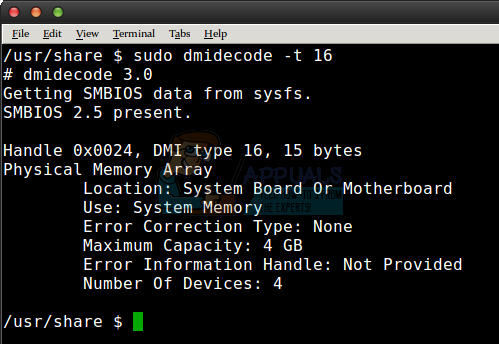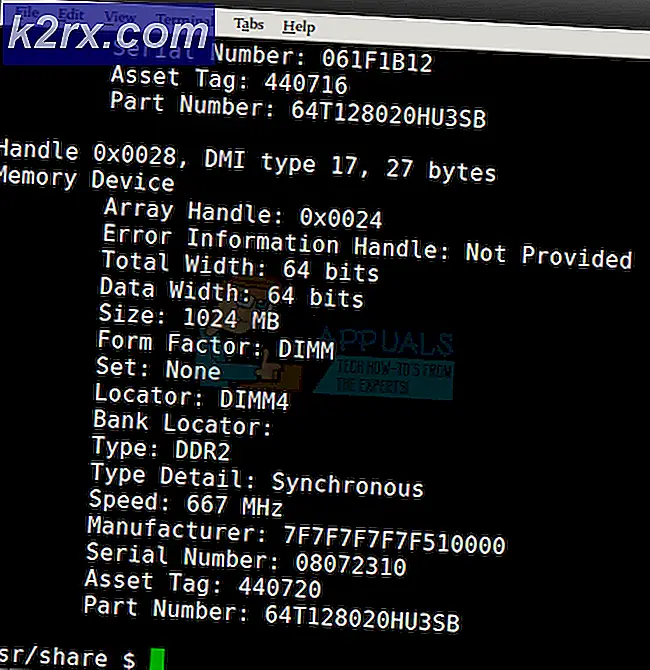Linux Check Memory Slots
How to Check Memory Usage in Linux based Server; Free Up Memory Automatically by Unloading DLLs in How To Check Number Of Physical Memory RAM Slots In Tweak Windows Virtual Memory PageFile.sys (Change or Optimize SQL Server 2000 / 2005 / 2008 in Large RAM Windows Vista 32-bit and 64-bit (x86 and x64). Personally, I always check for available memory banks the easy way, with the ever reliable 'check with eyeballs' method. Or, if I dont have physical access, I normally use the model name and number to check the hardware specs online.
Finding RAM size details in Linux for a System admin is very easy task. We can use free command to check how much RAM is present in our system. But when you want to find how many RAM/Memory sa lots are present in your system is bit tricky one. One way to do open your system and check what sa lots are there and how much RAM. Instead of doing this as a Hardware engineer we can use a command to check which sa lot is having below details.
- How much RAM
- Speed of the RAM
- Maximum RAM supported by that machine
- RAM location etc.
As you are already aware of dmidecode command to get all the system hardware info. We will use the same command for getting our RAM details.
To Find RAM details like maximum RAM, location of RAM etc we can use -t option with dmidecode as shown below
dmidecode -t 16

Output:

# dmidecode 2.11
SMBIOS 2.7 present.
Handle 0x000F, DMI type 16, 23 bytes
Physical Memory Array
Location: System Board Or Motherboard
Use: System Memory
Error Correction Type: None
Maximum Capacity: 16 GB
Error Information Handle: No Error
Number Of Devices: 2
If you see the above output we can figure it out how much maximum RAM this machine support, number of RAM devices and location etc.

To get actual RAM details such as how many sa lots, actual RAM present etc, use -t 17 option in dmidecode command
dmidecode -t 17
Output:
# dmidecode 2.11
SMBIOS 2.7 present.
Handle 0x0010, DMI type 17, 34 bytes
Memory Device
Array Handle: 0x000F
Error Information Handle: 0x0011
Total Width: 64 bit’s
Data Width: 64 bit’s
Size: 4096 MB
Form Factor: SODIMM
Set: None
Locator: DIMM0
Bank Locator: BANK 0
Type: DDR3
Type Detail: Synchronous
Speed: 1333 MHz
Manufacturer: Kingston
Serial Number: 4B29A74B
Asset Tag: 0123456789
Part Number: 99U5428-046.A00LF
Rank: Unknown
Configured Clock Speed: 1333 MHz
Handle 0x0013, DMI type 17, 34 bytes
Memory Device
Array Handle: 0x000F
Error Information Handle: 0x0014
Total Width: 64 bit’s
Data Width: 64 bit’s
Size: 4096 MB
Form Factor: SODIMM
Set: None
Locator: DIMM1
Bank Locator: BANK 2
Type: DDR3
Type Detail: Synchronous
Speed: 1333 MHz
Manufacturer: Kingston
Serial Number: 4729BF4B
Asset Tag: 0123456789
Part Number: 99U5428-046.A00LF
Rank: Unknown
Configured Clock Speed: 1333 MHz
If we want to see complete RAM details we can use -t memory option to get the details. Note this is a combination of 16 and 17 options
dmidecode -t memory
Output:
# dmidecode 2.11
SMBIOS 2.7 present.
Handle 0x000F, DMI type 16, 23 bytes
Physical Memory Array
Location: System Board Or Motherboard
Use: System Memory
Error Correction Type: None
Maximum Capacity: 16 GB
Error Information Handle: No Error
Number Of Devices: 2
Handle 0x0010, DMI type 17, 34 bytes
Memory Device
Array Handle: 0x000F
Error Information Handle: 0x0011
Total Width: 64 bit’s
Data Width: 64 bit’s
Size: 4096 MB
Form Factor: SODIMM
Set: None
Locator: DIMM0
Bank Locator: BANK 0
Type: DDR3
Type Detail: Synchronous
Speed: 1333 MHz
Manufacturer: Kingston
Serial Number: 4B29A74B
Asset Tag: 0123456789
Part Number: 99U5428-046.A00LF
Rank: Unknown
Configured Clock Speed: 1333 MHz
Handle 0x0013, DMI type 17, 34 bytes
Memory Device
Array Handle: 0x000F
Error Information Handle: 0x0014
Total Width: 64 bit’s
Data Width: 64 bit’s
Size: 4096 MB
Form Factor: SODIMM
Set: None
Locator: DIMM1
Bank Locator: BANK 2
Type: DDR3
Type Detail: Synchronous
Speed: 1333 MHz
Manufacturer: Kingston
Serial Number: 4729BF4B
Asset Tag: 0123456789
Part Number: 99U5428-046.A00LF
Rank: Unknown
Configured Clock Speed: 1333 MHz
Some of the valid keywords/types you can use and find different details are as follows.
bios
Linux Check Memory Size
system
baseboard
chassis
processor
memory
cache
connector
sa lot
We can even use lshw command to get RAM/Memory details as well Cache details such as L1, L2 and L3 levels.
lshw -class memory
Linux Check Memory Slots Work On Pc
*-firmware
description: BIOS
vendor: Hewlett-Packard
physical id: 0
version: F.22
date: 07/27/2011
size: 1MiB
capacity: 2496KiB
capabilities: pci upgrade shadowing cdboot bootselect edd int13floppynec int13floppytoshiba int13floppy360 int13floppy1200 int13floppy720 int13floppy2880 int9keyboard int10video acpi usb biosbootspecification uefi
*-memory
description: System Memory
physical id: f
sa lot: System board or motherboard
size: 8GiB
*-bank:0
description: SODIMM DDR3 Synchronous 1333 MHz (0.8 ns)
product: 99U5428-046.A00LF
vendor: Kingston
physical id: 0
serial: 4B29A74B
sa lot: DIMM0
size: 4GiB
width: 64 bit’s
clock: 1333MHz (0.8ns)
*-bank:1
description: SODIMM DDR3 Synchronous 1333 MHz (0.8 ns)
product: 99U5428-046.A00LF
vendor: Kingston
physical id: 1
serial: 4729BF4B
sa lot: DIMM1
size: 4GiB
width: 64 bit’s
clock: 1333MHz (0.8ns)
*-cache:0
description: L1 cache
physical id: 1c
sa lot: L1 Cache
size: 32KiB
capacity: 32KiB
capabilities: synchronous internal write-through instruction
*-cache:1
description: L2 cache
physical id: 1d
sa lot: L2 Cache
size: 256KiB
capacity: 256KiB
capabilities: synchronous internal write-through unified
*-cache:2
description: L3 cache
physical id: 1e
sa lot: L3 Cache
size: 3MiB
capacity: 3MiB
capabilities: synchronous internal write-through unified
*-cache
description: L1 cache
physical id: 1b
sa lot: L1 Cache
size: 32KiB
capacity: 32KiB
capabilities: synchronous internal write-through data
Do let us know if there is any way to find RAM sa lot details.
The following two tabs change content below.- Docker: How to copy files to/from docker container - June 30, 2020
- Anisble: ERROR! unexpected parameter type in action:
Fix - June 29, 2020 - FREE: JOIN OUR DEVOPS TELEGRAM GROUPS - August 2, 2019
- Review: Whizlabs Practice Tests for AWS Certified Solutions Architect Professional (CSAP) - August 27, 2018
- How to use ohai/chef-shell to get node attributes - July 19, 2018